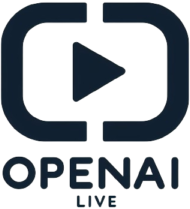[ad_1]
A conversation with Justin Rose, President of Lifecycle Solutions, Supply Management, and Customer Success.

Our Executive Function series features perspectives from leaders driving transformation through AI.
John Deere helps produce food, fiber, fuel, and infrastructure, and works for every single person on the planet. It all started nearly 200 years ago with a steel plow. Today, John Deere drives innovation in agriculture, construction, forestry, turf, power systems, and more. We spoke with Justin Rose about AI transforming agriculture, its impact on traditional customer success teams, and insights from its AI deployment at John Deere.
Can you elaborate on the different components of the business and who John Deere’s customers are across its ecosystem?
John Deere is almost 200 years old—we’re celebrating our 188th year this year. From the start, our focus has been on serving customers and driving innovation. The company was founded on an original innovation: a self-scouring steel plow that could cut through the thick, rich soil of the Midwest without clogging. That initial product set the stage for what we’ve become.
Today, our portfolio is much broader—we operate in agriculture, construction, road building, forestry, and turf care, with over 100 different product lines. Our customers range from individual farmers and ranchers, including hobbyists, to vast agricultural enterprises farming millions of acres per year. We also serve construction companies, forestry operators, homeowners, and more, across every continent and climate.
Fun fact: our machines roll over about one-third of the Earth’s surface every year, and that number continues to grow. It’s really a large-scale endeavor to support human civilization.
As we dig deeper, I see huge potential to optimize individual practices—whether in turf management, agriculture, or construction. This is just the beginning, and that’s what excites me. It also gives me confidence in a company that’s been around for nearly 200 years. I have no doubt we’ll be here for another century, and the next 100 years might be even more exciting than the last.
How do you see AI transforming agriculture? What challenges can it help solve?
Agriculture is a huge focus for us, and it’s more than just food—it’s also fuel, fiber, and building materials. A single U.S. farm feeds about 169 people annually, so making farming more efficient and sustainable is critical.
Our goal is to help farmers be more profitable and sustainable while using fewer resources—less land, chemicals, and labor. AI isn’t just helpful here; it’s essential. Take corn and soybeans, for example—12 trillion plants are grown in the U.S. each year. The best farms produce about 200 bushels per acre, but top growers have achieved over 600. If we could optimize each plant individually, we could dramatically increase yields. But how do you do that at such an enormous scale? That’s where AI comes in.
A great example is our See & Spray technology. Traditional sprayers coat entire fields with herbicides, but our system uses 36 cameras and advanced machine learning to identify and spray only the weeds—while moving at speeds of 12-15 mph, covering three football fields per minute. The result? Up to 70% less chemical use. That’s a win for profitability, sustainability, and efficiency. But before farmers see that impact, they need to learn about the technology, how to operate it, configure settings, plan their season, and make in-season adjustments. AI is helping there too and this is one area with tremendous value.
Imagine applying this level of precision across millions of acres and trillions of plants. At scale, that’s the challenge AI is helping us solve.
“[AI] is necessary for us to be able to work at a global scale.”
Many of Deere’s customers aren’t technologists by trade. How do you communicate the value of AI to them?
Let’s dispel the myth: farmers are tech-savvy. They’re practical, and they adopt technology when it proves its worth. Farming is also high stakes—one bad year could mean losing everything. They don’t have endless chances to get it right, but with AI, we can turn their 40 harvests into 40,000 opportunities to learn and optimize.
At the core, it’s about giving farmers something invaluable—time. They’re not just farmers; they’re CEOs, CFOs, and CTOs, all while physically working the land. With labor shortages and an intense planting window of just three weeks for 12 trillion plants, every moment counts.
AI helps simplify that complexity and overcome challenges. Whether it’s precision equipment like See & Spray or digital tools that optimize farm operations, technology ensures tasks get done efficiently and on time. It’s not just farmers who benefit—dealers face immense pressure too. Right now, diagnosing a machine issue can take hours, sifting through thousands of pages of manuals and repair records. AI-powered tools can instantly analyze all that data, offering precise diagnostics, parts lists, and repair instructions, making dealers’ jobs much easier.
With AI, have there been any changes in the way you approach customer success?
One area is our business model. We’re shifting to subscription-based, renewable licenses for our cutting-edge technology, reducing upfront costs and ensuring customers pay only when they use it—delivering value before full commitment. Our success depends on theirs.
With hundreds of thousands of machines operating across millions of acres, another area is using real-time data to provide actionable insights at the right moment.
For example, a traditional customer success approach might send automated sprayer reminders, but if it’s raining all week, they’re irrelevant or frustrating. With data, we analyze farmers’ goals and timing to provide timely, relevant support that optimizes operations.
Our vision is an AI-powered customer success function where a small team, aided by real-time telematics, delivers personalized support at a 1,000:1 ratio, rather than the traditional 10:1. AI and automation ensure timely, relevant outreach, keeping humans in the loop while scaling efficiency.
“This is the slowest it’s ever going to go and we’re all going to have to raise our game and move more quickly all the time.”
What insights have you uncovered about deploying and scaling AI as more of it goes into production?
The key to moving beyond the pilot stage and scaling successfully is having a clear, unified vision. If the team isn’t aligned from the start, you risk constant rework and misalignment. That’s why we focus on being crystal clear about where we’re headed.
Ultimately, scaling AI requires a close collaboration between our business, tech teams, and OpenAI. We’re tackling complex questions—how to structure AI networks, set up evaluations, and integrate cutting-edge reasoning models. We’re not claiming to lead the world, but we’re definitely at the forefront, pushing aggressively to stay ahead.
For any leader looking to adopt AI, one thing is clear—this is the slowest AI will ever move. The pace of development is only going to accelerate, and organizations will have to keep raising their game. It’s an exciting challenge, and I feel confident in our ability to stay ahead. We’re ready to get after it.
“It’s about taking an end-to-end view of where we can weave AI in at every step […]”
Are there any particular use cases or examples you’re proud of where AI is really making a difference?
AI is transforming customer success for us at every step of the journey. Once a customer buys a new piece of equipment, they often don’t fully grasp its capabilities right away. AI helps by allowing them to ask natural language questions, get personalized setup guidance, and even receive preseason recommendations—like how much less chemical product they’ll need with See & Spray based on their past usage and upcoming weather patterns.
As the season starts, AI flags key insights. If a sprayer should be in the field but isn’t, we notify the dealer with relevant details—like if the farmer isn’t using See & Spray and is missing out on major cost savings. If a machine reverts to traditional spraying, AI helps diagnose why—maybe the boom height is off, they’re driving too fast, or the cameras need cleaning. By analyzing thousands of machines in real time, AI identifies the issue and delivers targeted recommendations to both the customer and dealer, ensuring a better experience the next day.
Then, at the end of the season, AI helps prove the value. Since our model is based on customers paying when they see real benefits, we use AI to generate personalized ROI reports, summarizing their savings and efficiency gains.
It’s all about weaving AI into every stage—from purchase to first use, optimizing performance in-season, and ultimately making renewals an easy decision. We’re not just improving the farmer’s experience—we’re building an AI-native customer success model that could be applied to any industry.
John Deere is leveraging OpenAI APIs to support their customer success teams, dealers, internal operations members, and data scientists who are working to ensure farmers benefit from their technology like See & Spray.
Related articles
[ad_2]




